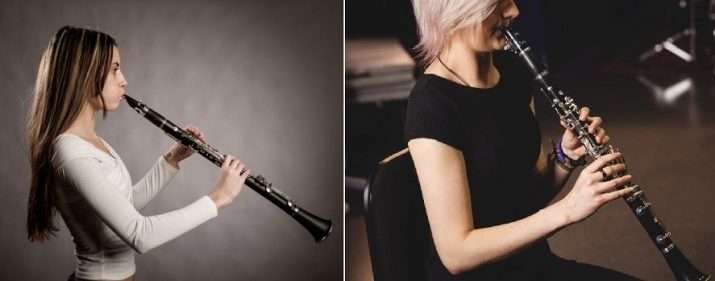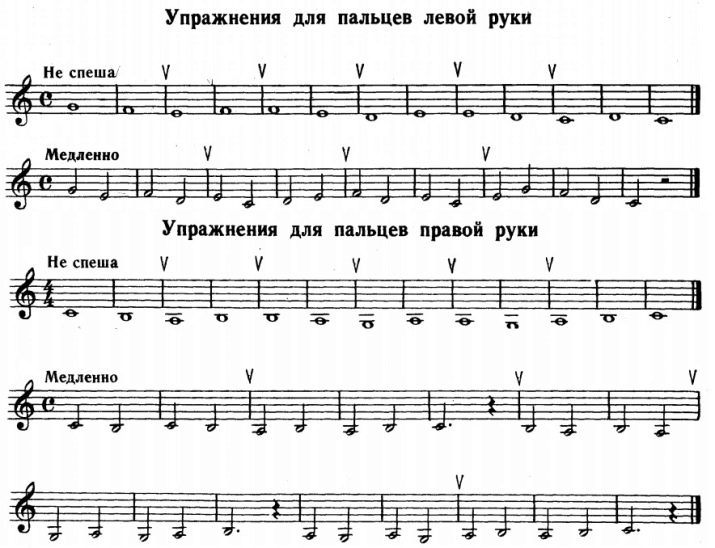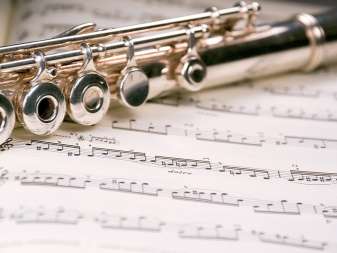
How to play the clarinet?
Contents
Children can start learning to play the clarinet from scratch from the age of 8, but at the same time, small clarinets of C (“Do”), D (“Re”) and Es (“E-flat”) scales are suitable for learning. This limitation is due to the fact that larger clarinets require longer fingers. Around the age of 13-14, the time will come to discover new possibilities and sounds, for example, with a clarinet in B (C) scale. Adults can choose any version of the instrument for their training.
Correct positioning of the clarinetist
Starting learning to play a musical instrument, a beginner must first learn how to hold it correctly and place it for playing.
Particular attention is paid to the staging of the clarinetist, since many points are important here:
- setting the body and legs;
- head position;
- placement of hands and fingers;
- breath;
- the position of the mouthpiece in the mouth;
- language setting.
The clarinet can be played in a sitting or standing position. In a standing position, you should lean equally on both legs, you need to stand with a straight body. When sitting, both feet rest on the floor.
When playing, the instrument is at an angle of 45 degrees with respect to the floor plane. The bell of the clarinet is located above the knees of the seated musician. The head should be kept straight.

Hands are placed as follows.
- The right hand supports the instrument by the lower knee. The thumb occupies a specially designed place on the opposite side of the clarinet from the sound holes (bottom). This place is called the stop. The thumb here serves to properly hold the tool. The index, middle and ring fingers are located on the sound holes (valves) of the lower knee.
- The thumb of the left hand is also below, but only in part of the upper knee. Its function is to control the octave valve. The next fingers (index, middle and ring fingers) lie on the valves of the upper knee.
Hands should not be in tension or pressed to the body. And the fingers are always close to the valves, not far away from them.
The most difficult tasks for beginners are setting the tongue, breathing and mouthpiece. There are too many nuances that it is unlikely that it will be possible to fully cope with without a professional. It is better to take a few lessons from the teacher.
But you need to know about it.
The mouthpiece should lie on the lower lip, and enter the mouth so that the upper teeth touch it at a distance of 12-14 mm from the beginning. Rather, this distance can only be determined experimentally. The lips wrap around the mouthpiece in a tight ring to prevent air from escaping outside the channel when blowing into it.
Below are some details of the clarinet player’s embouchure.

Breathing while playing
- inhalation is performed quickly and simultaneously with the corners of the mouth and nose;
- exhale – smoothly, without interrupting the note.
Breathing is trained from the very beginning of training, playing simple exercises on one note, and a little later – various scales.
The musician’s tongue acts as a valve, blocking the channel and dosing the stream of air that enters the sound channel of the instrument from exhalation. It is on the actions of the language that the nature of the sounding music depends: continuous, abrupt, loud, quiet, accentuated, calm. For example, when receiving a very quiet sound, the tongue should gently touch the channel of the reed, and then lightly push off from it.
It becomes clear that it is impossible to describe all the nuances of tongue movements when playing the clarinet. The correct sound is determined only by ear, and a professional can evaluate the correctness of the sound.
How to tune a clarinet?
The clarinet is tuned depending on the composition of the musical group the clarinetist plays in. There are mainly concert tunings of the A440. Therefore, you need to tune in to the system C (B) of the natural scale, starting from the sound C.
You can tune by tuned piano or electronic tuner. For beginners, a tuner is the best solution.
When the sound is lower than necessary, the keg of the instrument is extended a little further from the upper knee at the place of their connection. If the sound is higher, then, on the contrary, the barrel moves towards the upper knee. If it is impossible to adjust the sound with a barrel, this can be done with a bell or lower knee.

Exercises for the game
The best exercises for beginners are playing long notes to develop the breath and find the right sounds with certain positions of the mouthpiece in the mouth and actions of the tongue.
For example, the following will do:

Next, scales are played in different durations and rhythms. Exercises for this need to be taken in the textbooks of playing the clarinet, for example:
- S. Rozanov. Clarinet School, 10th edition;
- G. Klose. “School of playing the clarinet”, publishing house “Lan”, St. Petersburg.
Video tutorials can help.
Possible mistakes
The following training mistakes should be avoided:
- the instrument is tuned with low sounds, which will inevitably lead to false notes when playing loudly;
- neglect of moistening the mouthpiece before playing will be expressed in dry, faded sounds of the clarinet;
- inept tuning of the instrument does not develop the musician’s ear, but leads to disappointment in learning (you should entrust the tuning to professionals at first).
The most important mistakes will be the refusal of lessons with a teacher and the unwillingness to learn musical notation.





